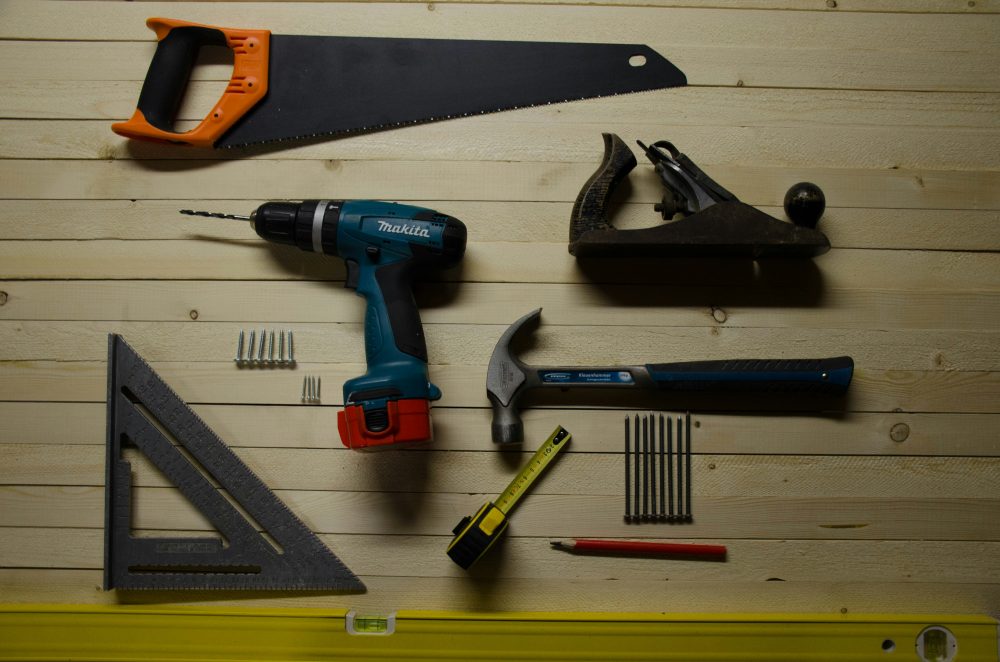Photo by Minh Pham on Unsplash
Are you diving into the daunting world of DIY home upgrades? Taking on room renovations can be intimidating, especially if it’s your first time and you want to make major changes. However, armed with the right tools and knowledge, you’ll be set up for a successful – and safe – project.
Whether you’re refreshing a bathroom, expanding your living area, or giving your kitchen a complete overhaul, discover the essential equipment you should keep at your fingertips. You might need extra specialist tools for each project, but this set is a fantastic foundation.
- PPE
As with anything in life, it’s safety first when approaching room renovation. Invest in quality Personal Protective Equipment (PPE) for your head, face, hands and feet. You’ll need:
- Helmet
- Goggles/glasses
- Dust mask
- Work gloves
- Knee pads
- Safety boots

Photo by Daniil Silantev on Unsplash
- Demolition
The most important equipment for your demolition work is your PPE. Ensure you are wearing the full set before you pick up your tools!
Are you removing a wall to free up more space? You’ll need a sledgehammer to break through drywall or masonry walls. Remember to get permission to alter your property before you remove any walls, and triple-check that the wall you’re tearing down is not load-bearing.
Prying off (and apart) old fixtures is best attempted with the aptly named wrecking bar. If these fixtures leave behind stubborn grout and adhesives, you’ll find a multi-tool with its oscillating blade and choice of attachments beneficial in smoothing the surface.
- Drilling
No DIY room renovation can be completed without a reliable drill. These are essential for a wide variety of tasks in construction, carpentry, electrical work, and plumbing.
A cordless drill offers the most flexibility because you can angle it easily in tight spaces with no worries about wires. Go for a combi model for additional screw-driving functionality. Most drills are effective with wood, plastic, and light masonry.

Photo by Eugen Str on Unsplash
Attach a concrete drill bit for heavy masonry tasks and a tile bit to minimise the risk of chips and cracks when working with ceramic and porcelain. Consider a hammer drill to penetrate brickwork. Using the right drill or bit for the material is crucial to your safety and success.
 Photo by Bernie Almanzar on Unsplash
Photo by Bernie Almanzar on Unsplash
- Measuring
Accuracy is paramount to ensuring the finished result of your project is polished. It’s also essential to ensuring your safety as it can be dangerous to drill, cut, or hammer in the wrong place.
A traditional tape measure is your best friend, with the option to measure in inches and centimetres. Choose a retractable metal model for easier access to hard-to-reach spots.
Use a spirit level to perfectly align shelves, mirrors, and pictures. For more complex tasks that require precision such as installing ceramic tiles and cabinets, a laser level is a must-have tool. Ensure straight cuts and perfect 90-degree corners with a carpenter’s square.
- Partnership Post






